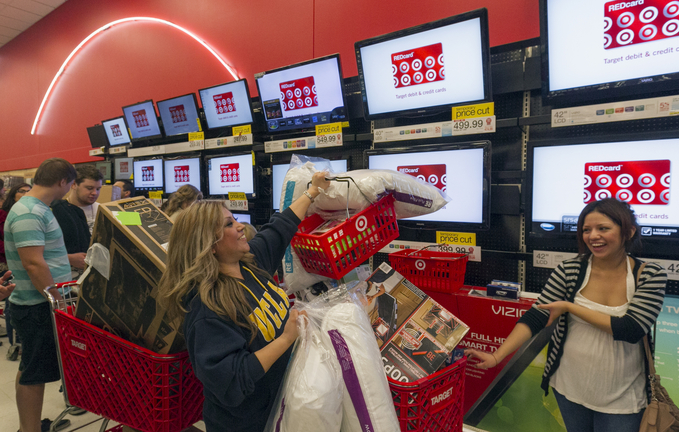NEW YORK — Will Washington be the Grinch who stole Christmas?
After weeks of bickering between Congress and the White House, President Obama late Wednesday signed into law a plan that ended a partial 16-day government shutdown and suspended the nation’s debt limit until early next year.
But the measure, which comes just weeks ahead of the holiday shopping season, only temporarily averts a potential default on U.S. debt that could send the nation into a recession.
Retailers hope that short-term uncertainty won’t stop Americans from spending during the busiest shopping period of the year, but they’re fearful that it will.
“I am not nervous, but I am mindful,” said Jay Stein, chairman of Stein Mart, a 300-store chain that sells home goods and clothing. “The biggest enemy of consumer confidence is uncertainty.”
Retailers and industry watchers say Washington gridlock already has caused shoppers to hold back on purchases.
The number of people going into stores nationwide dropped 7.5 percent for the week that ended Oct. 5 and 7.1 percent during the following week compared with a year ago, according to ShopperTrak, which measures foot traffic at 40,000 retail outlets across the country.
Men’s clothier Jos. A. Bank Clothiers and furniture chain Ethan Allen said their customers cut back in recent weeks. And auto sales, which had been strong, trailed off last week, with experts blaming Washington lawmakers.
Retailers say the agreement that lawmakers approved, which funds the government until Jan. 15 and gives the Treasury the ability to borrow above its limit until Feb. 7, may not be enough to alleviate shoppers’ concerns.
Robert N. Wildrick, chairman of Jos. A. Bank, which has 623 U.S. stores including one in Freeport and another in Portland, said retailers can’t afford more uncertainty during the holiday shopping season. “The more this nonsense goes on …. the more scared (consumers) become,” he said.
Even before the stalemate in Washington, retailers had reasons to be cautiously optimistic about the holiday season, which accounts for up to 40 percent of retailers’ annual revenue. While the job and housing markets are improving, that hasn’t yet translated into sustained spending increases among shoppers.
Send questions/comments to the editors.



Success. Please wait for the page to reload. If the page does not reload within 5 seconds, please refresh the page.
Enter your email and password to access comments.
Hi, to comment on stories you must . This profile is in addition to your subscription and website login.
Already have a commenting profile? .
Invalid username/password.
Please check your email to confirm and complete your registration.
Only subscribers are eligible to post comments. Please subscribe or login first for digital access. Here’s why.
Use the form below to reset your password. When you've submitted your account email, we will send an email with a reset code.